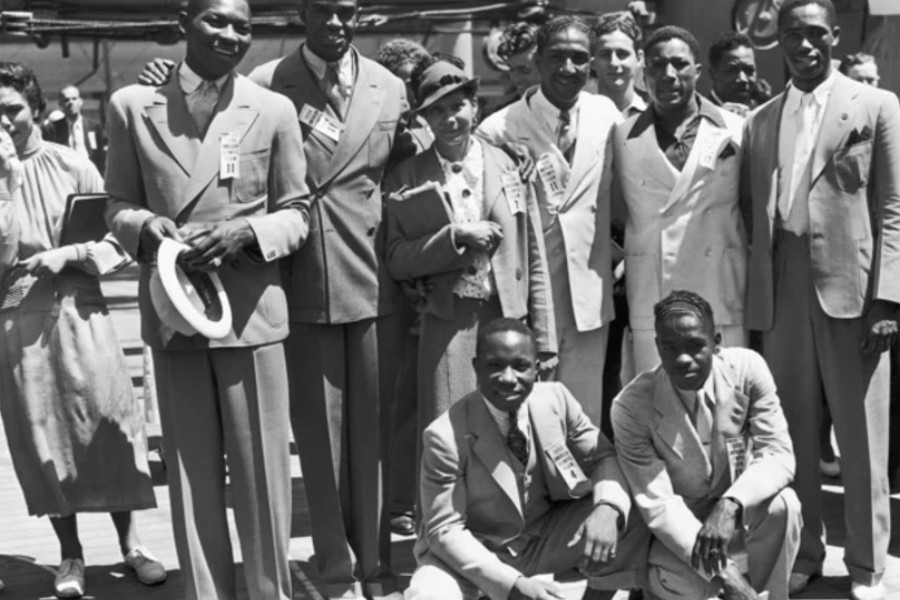 By the mid-1970s, deteriorating building conditions had caused this former Harlem elementary school to shut its doors to students. Designed by C.B.J. Snyder, the prolific architect for dozens of New York public schools at the turn of the 20th century, the five-story Renaissance Revival edifice (1903) continued to decay after its abandonment: trees had taken root inside, growing out through windows, rotting floor boards, and the roof, and the exterior’s crumbling classical cornice had been removed. When the Boys & Girls Club of Harlem (BGCHarlem) bought the property in 1986, it planned to demolish the structure and build a new mixed-use facility.
By the mid-1970s, deteriorating building conditions had caused this former Harlem elementary school to shut its doors to students. Designed by C.B.J. Snyder, the prolific architect for dozens of New York public schools at the turn of the 20th century, the five-story Renaissance Revival edifice (1903) continued to decay after its abandonment: trees had taken root inside, growing out through windows, rotting floor boards, and the roof, and the exterior’s crumbling classical cornice had been removed. When the Boys & Girls Club of Harlem (BGCHarlem) bought the property in 1986, it planned to demolish the structure and build a new mixed-use facility.
But by the time BGCHarlem could proceed with development two decades later, downzoning had imposed limitations on how much new construction could be built. Furthermore, the community expressed interest in saving the stately structure, especially since many local residents had attended school there in their youth. “At that point, we began to rethink how to proceed, looking at how the project could be financed,” says Joe Coppola of Dattner Architects.
To pay for the $45 million project, the team, including Alembic Community Development and Monadnock Construction, applied for the site to be placed on the National Register of Historic Places. Using historic tax credits and funding from the city’s Department of Housing Preservation and Development (HPD), the architects restored and adapted the old school, creating a new Boys & Girls facility and 79 units of affordable housing.
“The National Park Service thought that we should conserve a number of the interior elements, which was surprising to us, given the state of the building,” explains Coppola. So features such as Snyder’s innovative H-plan and wrought iron staircases were preserved and incorporated into the design for the 110,000-square-foot program. The Boys & Girls Club, located on the first floor, makes use of the spacious south courtyard and ornamental grille entrance gate, while residents enter on the north side of the building.
“Saving the building was a positive thing for everybody,” says Coppola. “It’s very rewarding that we were able to bring it back to life and help to better serve the Harlem community.”
Via source
Become a Harlem Insider!
By submitting this form, you are consenting to receive marketing emails from: . You can revoke your consent to receive emails at any time by using the SafeUnsubscribe® link, found at the bottom of every email. Emails are serviced by Constant Contact








